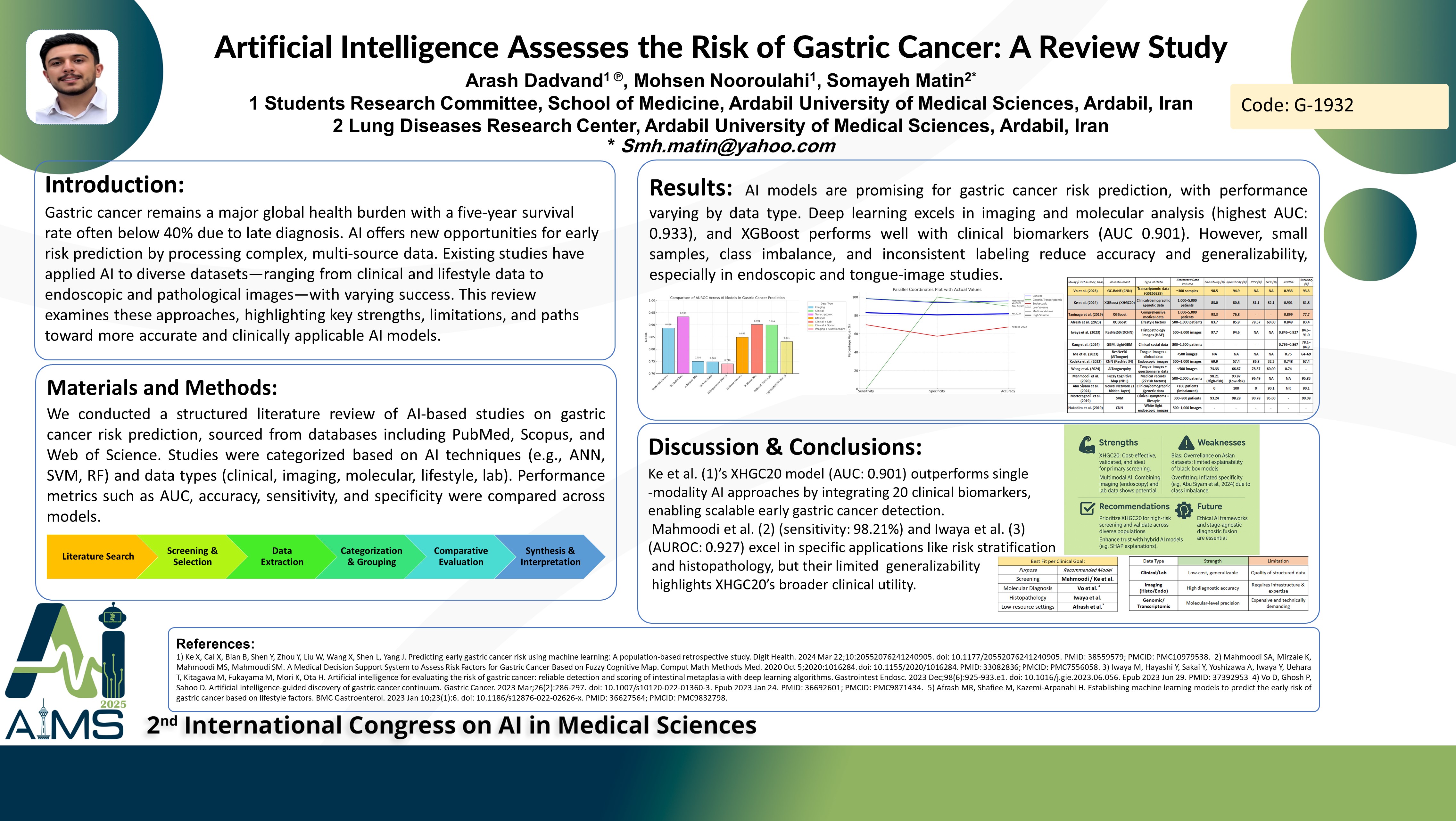Artificial Intelligence Assesses the Risk of Gastric Cancer: A Review Study
Code: G-1932
Authors: Arash Dadvand ℗, Mohsen Nooroulahi, Somayeh Matin *
Schedule: Not Scheduled!
Tag: Cancer Diagnosis & Treatment
Download: Download Poster
Abstract:
Abstract
Background and Aim: Gastric cancer is a major worldwide health concern. The five-year survival rate is markedly low, sometimes below 40%, primarily due to late-stage diagnosis. The complex nature of gastric cancer development hampers risk assessment and early intervention. Artificial intelligence (AI) improves predictive accuracy and enables detection by analyzing high-dimensional datasets. This article aims to evaluate, analyze, and assess the merits and shortcomings of studies predicting gastric cancer risk with AI while providing recommendations for improving accuracy and facilitating broader clinical application. Method: We looked at 20 papers from PubMed that used artificial intelligence to predict stomach cancer risk. Articles were categorized by the artificial intelligence method used and the kind of dataset, including clinical/demographic, imaging, molecular, laboratory, cohort, and administrative data. Results: Clinical and demographic data were subjected to basic models like Logistic Regression, Decision Trees, and Support Vector Machines. Advanced models like Artificial Neural Networks, Deep Neural Networks, and Autoencoders were used with imaging and molecular data. Extreme Gradient Boosting and Light Gradient Boosting Machine analyzed laboratory data, while models like Cox proportional hazards regression assessed large cohort datasets. Administrative health records were subjected to ensemble techniques such as Random Forest and Classification and Regression Trees (CART). Among these, deep learning models, especially Convolutional Neural Networks, reached peak performance with 94.3% accuracy in endoscopic and histopathological analysis and early-stage detection with 92.5% sensitivity and 88.7% specificity. Extreme Gradient Boosting demonstrated exceptional performance in processing laboratory data, achieving an area under the curve (AUC) of 0.91. Ensemble approaches enhanced stability by 18%. While 15% of studies demonstrated the therapeutic application of artificial intelligence, revealing a deficiency in practical implementations, some have achieved advancements. Conclusion: Deep learning algorithms possess the ability to markedly enhance prediction and early detection and diminish diagnostic delays in gastric cancer. Despite its robust prediction capabilities, artificial intelligence faces limitations, including dataset heterogeneity and restricted clinical implementation. Future initiatives should prioritize multi-center validation, clinical workflow integration, and enhanced model interpretability to promote broader real-world application.
Keywords
Gastric Cancer, Artificial Intelligence, Risk Predicting
